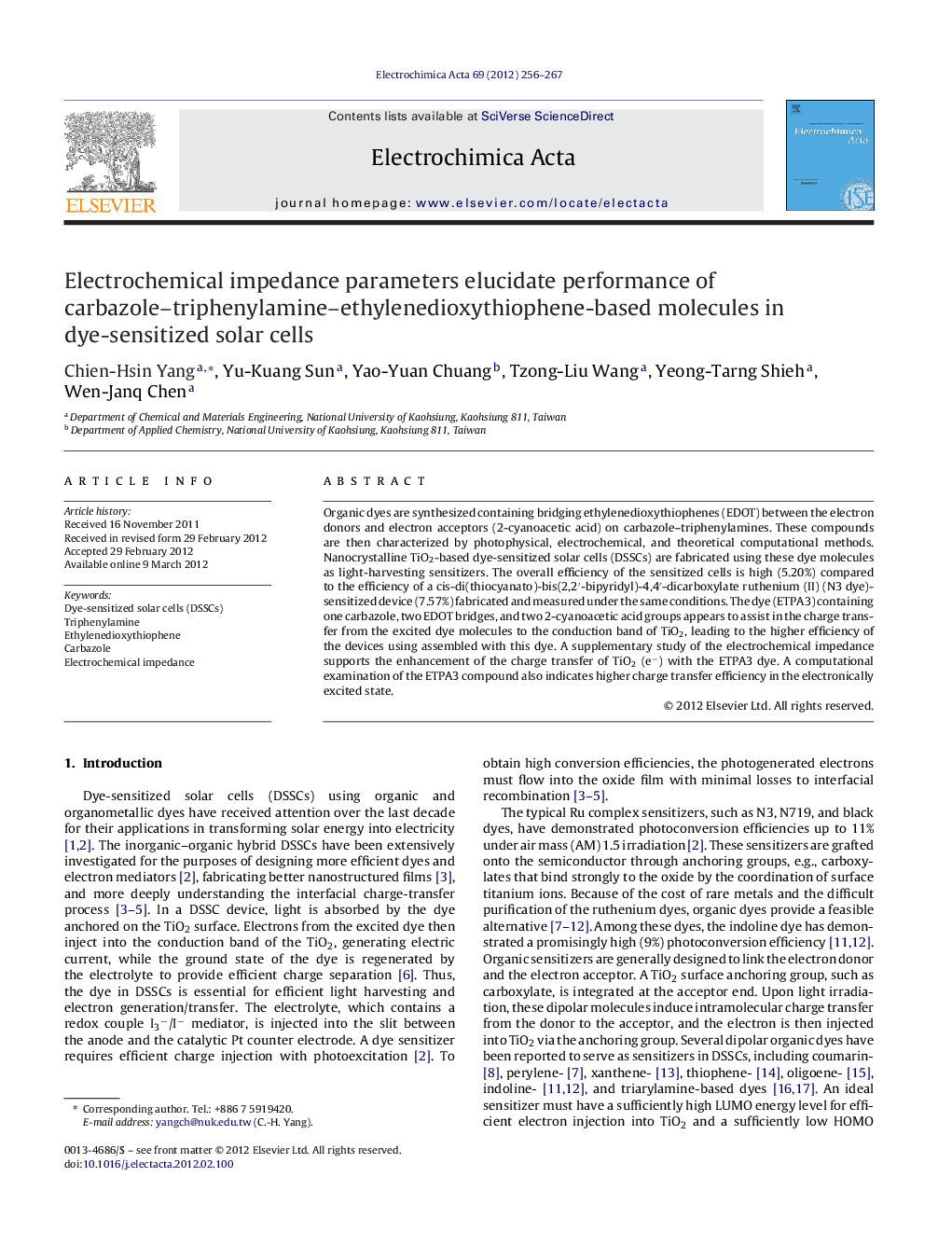| Article ID | Journal | Published Year | Pages | File Type |
|---|---|---|---|---|
| 188752 | Electrochimica Acta | 2012 | 12 Pages |
Organic dyes are synthesized containing bridging ethylenedioxythiophenes (EDOT) between the electron donors and electron acceptors (2-cyanoacetic acid) on carbazole–triphenylamines. These compounds are then characterized by photophysical, electrochemical, and theoretical computational methods. Nanocrystalline TiO2-based dye-sensitized solar cells (DSSCs) are fabricated using these dye molecules as light-harvesting sensitizers. The overall efficiency of the sensitized cells is high (5.20%) compared to the efficiency of a cis-di(thiocyanato)-bis(2,2′-bipyridyl)-4,4′-dicarboxylate ruthenium (II) (N3 dye)-sensitized device (7.57%) fabricated and measured under the same conditions. The dye (ETPA3) containing one carbazole, two EDOT bridges, and two 2-cyanoacetic acid groups appears to assist in the charge transfer from the excited dye molecules to the conduction band of TiO2, leading to the higher efficiency of the devices using assembled with this dye. A supplementary study of the electrochemical impedance supports the enhancement of the charge transfer of TiO2 (e−) with the ETPA3 dye. A computational examination of the ETPA3 compound also indicates higher charge transfer efficiency in the electronically excited state.
► The dye bridges EDOT between donor and acceptor on cabazole–triphenylamine frame. ► The efficiency of dye-sensitized cell gets 5.20% as compared N3-cell (7.57%). ► The dye bridges two EDOT segments appear to help conveying the charge transfer. ► Impedance study supports enhancing charge transfer of TiO2 (e−) with this dye.
